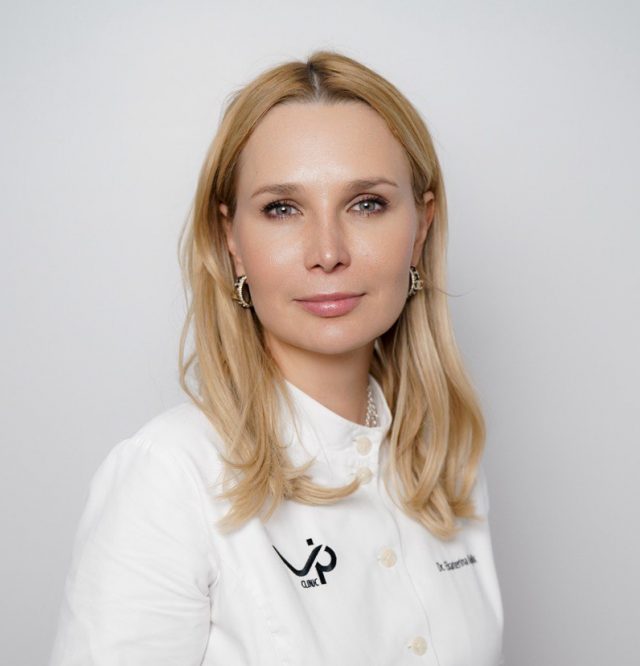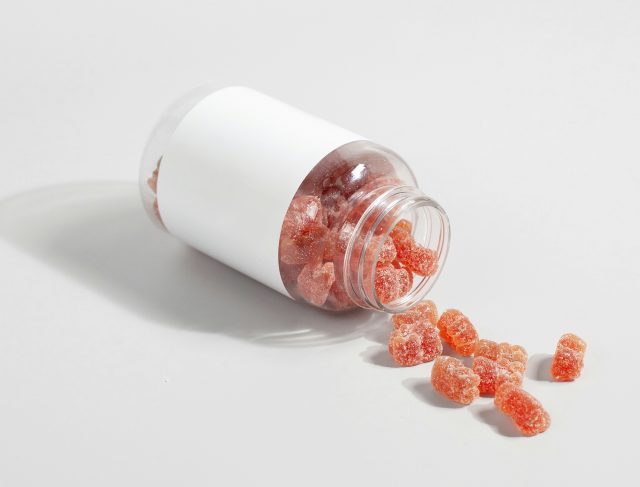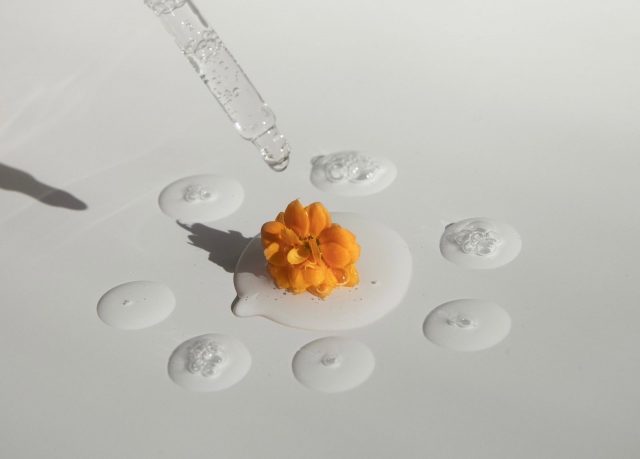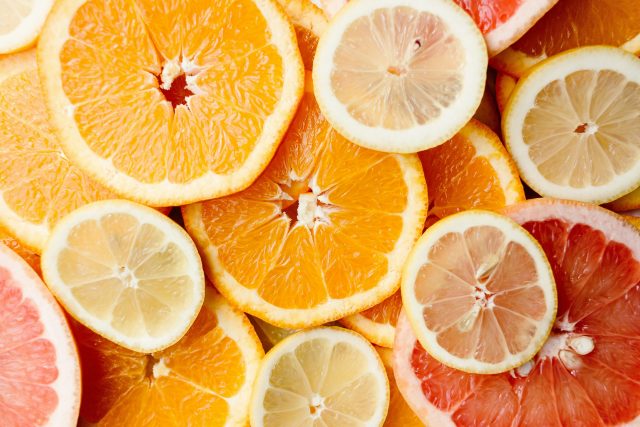
After 25 years, natural collagen production slows down and therefore the condition of the skin is affected. The epidermis becomes less elastic, the moisture level decreases and the first wrinkles gradually begin to form. How to solve the problem of depletion of collagen reserves in the body and is it true that cosmetics and supplements cannot always help? We talk to a beautician and nutritionist.
What is collagen
Let’s start with the basics: What is collagen and how does it affect youthful skin?
“collagen It is a protein produced naturally in our body. One third of the proteins in the body are collagen. Currently, scientists identify 28 types, but 90% of collagen is types 1, 2, and 3. It is such proteins that are responsible for the health of joints, the strength of bones and teeth, the beauty of hair and nails. as well as skin firmness and elasticity.
Scientists blame ultraviolet radiation, bad habits and an unbalanced menu low in antioxidants and high in carbohydrates as the cause of collagen loss. But still, the main enemy of collagen is time. After 25 years, the natural production of this valuable protein slows down and healing processes in the body, including the skin, are inhibited. The epidermis becomes drier, its tone decreases and wrinkles begin to appear,” says cosmetologist Ekaterina Kruglik, chief physician of the VIP Clinic network.
That is, over time, collagen reserves are depleted and the body needs external help. How to get it right?
How to increase collagen production in the skin?
Now there are a huge number of products containing collagen: dietary supplements, bars, drinks, cosmetics. But mindlessly consuming any form of collagen and hoping for results is not the best idea. Firstly, collagen will only be effective in combination with a proper diet. Secondly, this ingredient is absorbed differently by everyone. Therefore, taking supplements may not help. This is what cosmetologist Ekaterina Kruglik recommends doing to ensure the natural production of collagen.

Ekaterina Kruglik, Ph.D., beautician, chief physician of the VIP Clinic network
Diet
Our body “creates” collagen from foods. Primarily from foods rich in protein: meat, fish, eggs, seafood, nuts, legumes, cottage cheese. Nutritionists think that bone broth is the most beneficial method for collagen production. Additionally, the menu should contain sufficient amounts of healthy fats, vitamin C, zinc, selenium and antioxidants. It is also important to drink enough water: about one liter per 30 kilograms of weight.
Collagen Supplements

Of course, you can take nutritional supplements containing collagen. The most easily digestible and therefore effective is collagen of plant origin in powder form. It can be added not only to drinks but also to dishes such as salads and baked goods. However, it is worth considering that when taken with food, collagen is digested like other proteins, that is, it is broken down into amino acids. These may or may not be involved in the body’s own collagen production. It depends on the genes and whether there is a deficiency of these amino acids in the body. That’s why taking nutritional supplements doesn’t help everyone. Or it may not have the effect you expect.
Cosmetics (spoiler: no collagen)
Nowadays, collagen is added to creams and serums. But do not rely too much on such cosmetic formulas. The collagen in their composition is responsible for the visual effect: when the product is on the skin, it looks smoother and more toned. However, such products do not affect the production of your own collagen. Still, a number of cosmetic ingredients promote the synthesis of valuable protein: these are formulas containing AHA and BHA acids, retinol and vitamin C.
Cosmetology procedures

Of course, the effectiveness of home care cannot be compared with professional procedures. And this is understandable: the latter belong to invasive cosmetology, that is, they work inside the skin, at the levels where collagen is formed. Below is a list of procedures with proven effectiveness.
— Matrikin injections. Matrikines are protein fragments with low molecular weight. These are also called signaling molecules. Once in the skin, matricines give a signal: it is time to increase the production of collagen types 1, 3 and 4, as well as hyaluronic acid. As a result, the skin improves, skin tone and elasticity increase, and wrinkles become less visible.
— Injecting your own stem cells. The adult human body contains various types of stem cells. Mesenchymal cells (MSCs) are one of them. Fibroblasts are formed from these cells – real workaholic cells that synthesize collagen, elastin, hyaluronic acid and other important components responsible for firmness and elasticity of the skin. It is obtained from the patient’s own fat tissue and injected into the skin.
— Cold laser PicoSure. The feature of this laser is that it does not heat the skin, thus allowing you to work at maximum power without the risk of burning. The cold laser beam activates the already familiar fibroblasts, which leads to collagen synthesis and skin tightening. After the procedure, the treatment area may become slightly red, but this disappears after 2-3 hours. Since there is no recovery period, you can use the laser even on the eve of an important meeting. But still it is better to carry out the procedure in advance (for example, 10 days in advance), then the effect will be even stronger.
— Cellular rejuvenation Timeless. This proprietary three-stage system, which creates complex effects on the skin, consists of mesotherapy, laser and peptide cosmetics. The program begins with injections. A special composition that increases cellular regeneration is injected into the skin. Injections are followed by a cold PicoSure laser. It stimulates the functioning of fibroblasts and tightens collagen fibers. Finally, HydroPeptide peptide cosmetics are used: a soothing collagen mask, serum and sunscreen. There are no unpleasant sensations or rehabilitation period, and the effect lasts up to a year.
— Polylactic acid fillings. The main task of polylactic acid is not to create additional volume, but to rejuvenate the skin at the cellular level. Polylactic acid stimulates the work of fibroblasts, which leads to the active production of collagen and elastin. When the component is removed from the body, we are left with the “legacy” of a dense collagen framework. The oval of the face is visibly tightened, wrinkles are smoothed, and the skin becomes dense and elastic. Sometimes a single procedure may be enough for a noticeable effect; Up to three procedures may be needed.
Since our body is a single system, collagen production is affected by many factors, including the content of certain substances in the body. For example, sufficient amounts of hyaluronic acid or vitamin C. Nutritionist Anna Ivashkevich explains why these ingredients play an important role in collagen production.

Anna Ivashkevich, clinical psychologist-nutritionist, nutritionist, family therapist
hyaluronic acid
Probably everyone knows about hyaluronic acid. In addition to being found in our skin, this component is also found in connective tissues, bones and cartilage. Additionally, hyaluronic acid supports collagen production. A study was conducted in 2014 where wounds were treated in rodents. One group of rodents used plain water, and the other group used hyaluronic acid. The result showed that wounds treated with hyaluronic acid healed better and the level of type 2 collagen in the surrounding skin was much higher.
When using products containing hyaluronic acid, you should carefully follow the instructions on the package because they can have side effects, from itching to bruising and swelling.
C vitamin

Vitamin C is the foundation of our body and is necessary for collagen production. However, the human body cannot produce this on its own. Therefore, it needs to be outsourced. Essential foods that your diet should include: bell peppers, strawberries, broccoli, citrus fruits, cauliflower, sea buckthorn, Brussels sprouts and green leafy vegetables (parsley, dill).
ginseng
It is believed that this herb can increase the level of collagen in our body. Ginseng contains fatty acids, vitamins B, C, zinc, phosphorus, calcium, potassium, magnesium, pectin, amino acids and other beneficial substances. Therefore, this ingredient has anti-inflammatory and antioxidant properties, thus slowing down the aging process of skin cells. And, for example, red ginseng extract can reduce the stiffness of fibroblasts, which helps increase skin elasticity and increase the antioxidant activity of its cells.
Ginseng-based tinctures and teas are best consumed in the morning. The first is usually done at a ratio of 1 to 100. You need to pour boiling water over the root of the plant and leave it to infuse. It is best to use this option as a medicine in spoons, not in glasses – 1 teaspoon twice a day. And do not forget about contraindications – ginseng root is not suitable for allergy sufferers, pregnant and lactating women, patients with chronic liver diseases and epilepsy.
Collagen production depends on many factors; One of them is lifestyle. Therefore, if you really want to preserve collagen in skin tissues and increase its production, you need to approach the issue comprehensively: ensure adequate consumption of foods rich in collagen, lead a healthy lifestyle, protect the skin from exposure to UV rays and follow the recommendations. cosmetologists. In addition, this process should not be done alone, but with a competent specialist who will monitor the level of collagen in the body and how it is absorbed.
Source: People Talk
I’m Roger Gritton, and I’ve been writing for the The Fashion Vibes for over 5 years now. My specialty is beauty news; I’m passionate about covering the latest trends, products, and innovations in the industry. In my time there, I’ve become known as an authority on all things beauty-related.
I love discovering new experts to interview, researching up-and-coming ingredients and techniques that are making their way onto our beauty shelves and highlighting people who are making a difference in the world of cosmetics. My work has appeared not only on The Fashion Vibes, but also several other publications including the New York Times Magazine, Allure Magazine and Refinery29.





